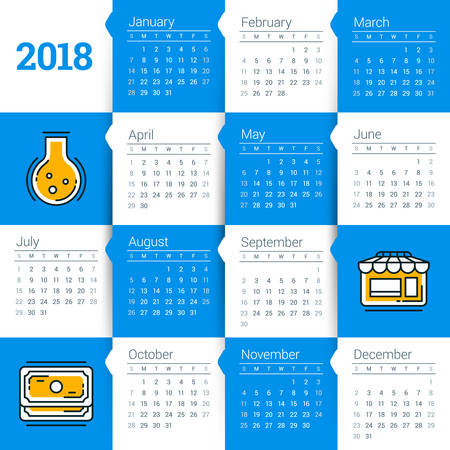1. The Power of Prioritization: How Top Entrepreneurs Block Their Time
Understanding the Importance of Prioritization
Successful US entrepreneurs know that not all tasks are created equal. With limited hours in the day, they focus on what moves the needle for their business. They don’t just react to emails or meetings; instead, they deliberately choose which tasks deserve their attention. This approach helps them stay on track and avoid burnout.
Identifying High-Impact Tasks
The first step is figuring out which activities actually make a difference. Entrepreneurs often ask themselves questions like: “What will help my business grow?” or “Which task will solve the biggest problem right now?” By identifying high-impact tasks, they ensure that their energy is spent wisely.
Using a Priority Matrix
A popular tool among US entrepreneurs is the priority matrix—sometimes called the Eisenhower Box. It helps sort tasks based on urgency and importance, so it’s clear what needs immediate attention and what can wait. Here’s how it works:
| Urgent | Not Urgent | |
|---|---|---|
| Important | Do First (High-priority projects, deadlines) |
Schedule (Long-term planning, growth strategies) |
| Not Important | Delegate (Routine emails, administrative work) |
Eliminate (Time-wasters, unnecessary meetings) |
Time Blocking for Maximum Focus
Once priorities are clear, top entrepreneurs use “time blocking” to protect their calendar from distractions. This means setting aside specific chunks of time for deep work, meetings, and even breaks. For example, mornings might be reserved for creative thinking while afternoons are used for calls or follow-ups. Here’s a simple example:
| Time Slot | Main Activity |
|---|---|
| 8:00 AM – 10:00 AM | Strategy & Deep Work |
| 10:30 AM – 12:00 PM | Team Meetings |
| 1:00 PM – 2:30 PM | Email & Admin Tasks |
| 3:00 PM – 5:00 PM | Client Calls / Networking |
Making It Work in Real Life
This method isn’t about being rigid—it’s about making sure your most important work gets done without constant interruptions. By prioritizing tasks and blocking time on their calendars, US entrepreneurs set themselves up for success every day.
2. Mastering Meetings: Scheduling Strategies to Make Every Minute Count
Cutting Down on Unnecessary Meetings
If you ask top US entrepreneurs, theyll tell you: not every meeting is necessary. Before sending out a calendar invite, consider if the topic can be handled by email, chat, or a quick phone call. This approach saves time and respects everyone’s schedule. Try asking yourself these questions before scheduling:
| Question | Why It Matters |
|---|---|
| Can this be solved without a meeting? | Reduces clutter on your calendar and frees up time. |
| Is everyone invited essential? | Keeps meetings focused and efficient. |
| What is the goal of this meeting? | Ensures there’s a clear purpose for gathering. |
Setting Clear Agendas for Productive Conversations
A well-defined agenda is a game-changer. When people know what to expect, meetings stay on track and run shorter. Send out an agenda at least a day in advance—this gives attendees time to prepare and helps avoid going off-topic. Here’s a simple agenda template used by many effective American entrepreneurs:
| Agenda Item | Description | Time Allocated |
|---|---|---|
| Welcome & Purpose | State the meeting’s main goal. | 2 mins |
| Main Discussion Points | List topics to cover, one by one. | 15 mins |
| Action Items & Next Steps | Assign tasks and deadlines. | 5 mins |
| Q&A / Open Floor | Address any final questions or concerns. | 3 mins |
Leveraging Tools for Better Meetings
The right tools make scheduling and running meetings smoother. Many US entrepreneurs rely on digital calendars like Google Calendar or Outlook to send invites and set reminders. Video conferencing platforms like Zoom or Microsoft Teams are also key for remote teams. Additionally, collaboration apps like Slack can help keep pre-meeting communication organized.
Popular Meeting Tools Among US Entrepreneurs:
| Tool Name | Main Use | Key Benefit |
|---|---|---|
| Google Calendar | Scheduling & reminders | Easily shareable and integrates with other apps |
| Zoom | Virtual meetings/video calls | User-friendly with reliable video quality |
| Trello/Asana | Task tracking during/after meetings | Keeps everyone accountable for action items |
| Slack Channels | Pre/post-meeting discussions | Cuts down on unnecessary meetings by centralizing conversations |
A Few Quick Tips:
- Always start and end on time—respect others’ schedules.
- If you finish early, wrap up—no need to fill the entire scheduled slot!
- Use “No Meeting” blocks on your calendar to protect your focus time.
This disciplined approach ensures your meetings are both brief and impactful, giving you more time to focus on what truly matters in your business.

3. Building Flexibility: The Art of Buffer Zones and Adaptability
In the fast-paced world of American entrepreneurship, a packed calendar might look impressive—but it can easily lead to burnout or missed opportunities. That’s why top US business leaders swear by building flexibility into their schedules. By intentionally leaving “buffer zones,” they create space for the unexpected and stay adaptable no matter what comes their way.
What Are Buffer Zones?
Buffer zones are short, unscheduled blocks of time between meetings, tasks, or appointments. These aren’t just empty gaps; they’re strategic pauses that let you handle overruns, respond to urgent issues, or simply recharge.
How Successful Entrepreneurs Use Buffers
| Entrepreneur | Buffer Zone Strategy | Why It Works |
|---|---|---|
| Elon Musk | Slices his day into 5-minute blocks with built-in gaps for urgent decisions | Makes room for high-priority pivots without derailing the day |
| Sara Blakely | Adds 15-minute breaks between meetings for reflection and notes | Keeps her focused and prepared for every new challenge |
| Reed Hastings | Saves Friday afternoons as “open time” for creative thinking or emergencies | Encourages innovation while handling last-minute needs smoothly |
Why Adaptability Matters in the US Business Culture
American entrepreneurs know that change is constant. Markets shift, clients reschedule, and sometimes tech glitches throw off your whole plan. Instead of sticking rigidly to a timetable, US business leaders adapt on the fly. This adaptability isn’t just about survival—it’s a way to spot new opportunities and build resilience.
Tips for Creating Flexibility in Your Schedule
- Add 10-15 minute buffers: Between calls or meetings to prevent back-to-back stress.
- Block out “catch-up” periods: At least once a day to tackle emails or unexpected tasks.
- Schedule regular review sessions: Weekly check-ins help adjust plans as priorities shift.
- Use calendar color-coding: Visually separate buffer zones from core work so you don’t overbook yourself.
- Embrace tech tools: Apps like Google Calendar and Outlook let you set default buffer times automatically.
The Bottom Line on Buffering Like an American Entrepreneur
The most effective business leaders in the US don’t see flexibility as wasted time—they see it as essential fuel for productivity and growth. By mastering the art of buffer zones and staying adaptable, you’ll be ready to meet challenges head-on while keeping your schedule (and sanity) intact.
4. Leveraging Technology: Favorite Scheduling Tools of US Entrepreneurs
Today’s most effective US entrepreneurs know that using the right technology can make or break their productivity. With countless meetings, deadlines, and tasks to manage, digital scheduling tools have become essential for keeping everything on track. Let’s explore the top apps and automation hacks that help American business leaders stay organized, save time, and keep their calendars perfectly in sync.
Top Calendar Apps Used by Entrepreneurs
The foundation of great scheduling starts with a reliable calendar app. Here are some favorites among US entrepreneurs:
| App Name | Main Features | Why Entrepreneurs Love It |
|---|---|---|
| Google Calendar | Easy sharing, integrations, color coding | Works everywhere, simple to use, free |
| Outlook Calendar | Email integration, meeting invites, reminders | Great for corporate teams, strong security |
| Calendly | Automated meeting scheduling, time zone detection | No more back-and-forth emails for appointments |
| Apple Calendar | Seamless with iOS devices, alerts | Perfect for Mac/iPhone users who want things to “just work” |
| Acuity Scheduling | Customizable booking pages, payments integration | Ideal for service businesses needing client bookings online |
Automation Hacks for Effortless Scheduling
Smart entrepreneurs don’t just rely on apps—they automate as much as possible. Here are some popular automation hacks:
- Automatic Reminders: Most calendar apps send reminders before events so nothing falls through the cracks.
- Time Zone Magic: Tools like Calendly adjust meeting times based on everyone’s location—no more confusion!
- Email Integration: Outlook and Google Calendar pull meeting requests straight from your inbox, letting you accept or reschedule instantly.
- Zaps & Workflows: Platforms like Zapier connect your calendar with other tools (like Slack or Trello) to automate task creation or send updates automatically.
- Snooze & Focus Blocks: Many entrepreneurs block “focus time” by setting recurring events that automatically mute notifications.
Synchronizing Across Devices and Teams
The best scheduling tools let entrepreneurs access their calendars anywhere—on laptops, tablets, or phones. They also allow sharing with assistants and team members to avoid double-booking or missed meetings. Here’s how top founders keep everything in sync:
- Cloud Syncing: All major calendar apps update changes instantly across devices.
- Shared Calendars: Teams use shared calendars for group projects or company-wide events.
- User Permissions: Control who can see or edit your schedule for privacy and flexibility.
The Bottom Line on Tech-Savvy Scheduling
If you want to run your business like America’s most efficient entrepreneurs, start by picking the right calendar app and automating as much as possible. The less time you spend managing your schedule manually, the more time you’ll have to focus on what really matters—growing your business.
5. Work-Life Integration: Setting Boundaries for Focus and Personal Well-being
For US entrepreneurs, mastering your calendar isn’t just about squeezing in more work—it’s about making sure you have time for what matters outside of business, too. Work-life integration is all about finding a healthy balance so you can stay productive without burning out. Here’s how some of the most effective entrepreneurs in America set boundaries and prioritize their well-being:
Block Out Personal Time—And Protect It
Just like meetings or project deadlines, personal time should have a reserved spot on your calendar. Whether it’s family dinners, workouts, or downtime with friends, treat these moments as non-negotiable appointments. Use tools like Google Calendar or Outlook to mark these blocks as “busy,” so colleagues and clients know not to schedule over them.
Sample Time-Blocking Schedule
| Time | Activity | Purpose |
|---|---|---|
| 7:00am – 8:00am | Morning Workout | Physical Wellness |
| 12:00pm – 1:00pm | Lunch with Family | Personal Connection |
| 6:00pm – 7:00pm | Unplug from Devices | Mental Recharge |
| 9:30pm – 10:00pm | Meditation/Reading | Wind Down for Sleep |
Unplug to Recharge Your Energy
The most successful entrepreneurs set clear digital boundaries. They designate “no email” hours after work and use features like Do Not Disturb on their phones during family or relaxation time. This helps prevent burnout and keeps them present in the moment.
Tips for Unplugging Effectively:
- Create Tech-Free Zones: Make bedrooms and dining areas device-free to encourage real conversations.
- Set Notification Schedules: Use app settings to mute work notifications after business hours.
- Communicate Availability: Let your team know when you’re offline so they respect your boundaries.
Make Space for Wellness Every Week
Your calendar should reflect your commitment to health—just like it does your business goals. Schedule regular activities that promote physical and mental wellness, such as exercise classes, therapy sessions, or outdoor walks. Even short breaks throughout the day can boost productivity and creativity.
Weekly Wellness Planner Example:
| Day | Wellness Activity |
|---|---|
| Monday | Pilates Class (6pm) |
| Wednesday | Mental Health Check-In (15min at noon) |
| Friday | Nature Walk (after lunch) |
| Sunday | No-Work Day / Family Time |
The Takeaway:
Pioneering US entrepreneurs know that optimizing your calendar isn’t just about work—it’s about creating space for what fuels your best self. By setting clear boundaries, blocking personal time, unplugging regularly, and prioritizing wellness, you’ll feel more energized and focused both in business and at home.


